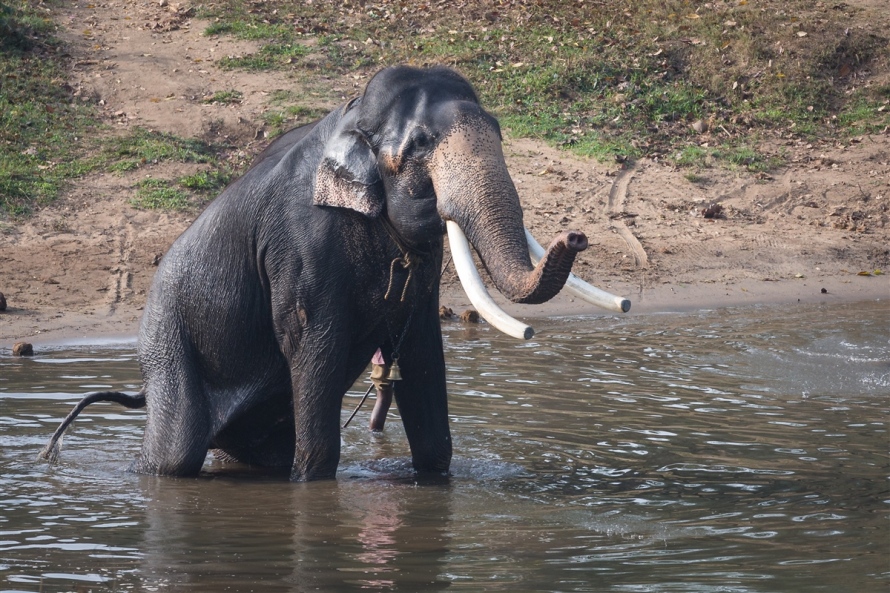
Set in the Nilgiris foothills, the 320 square km Mudumalai Tiger Reserve is home around 50 tigers, giving Mudumalai one of India’s highest tiger population densities.
It is widely considered to be Tamil Nadu’s top wildlife-spotting location, and along with Karnataka’s Bandipur and Nagarhole, Kerala’s Wayanad and Tamil Nadu’s Sathyamangalam Tiger Reserve, forms an unbroken chain of reserves with the world’s single largest tiger population (around 570 in total).
On my visit however, tigers were nowhere to be seen – but there were plenty of elephants on show. Unfortunately none of these were wild elephants, but instead
rescued or old timber-trade elephants unfit to return to the wild and now looked after at an elephant sanctuary.


The sanctuary is home to around 22 elephants, the oldest being Bhama, a cow, who is estimated to be over 65 years old and was captured back in 1963.
The elephants do seem to be well looked after, with a detailed dietary plan for each elephant and regular trips down to the river to be washed.
In the food prep area the camp elephants’ diets were listed on a huge board with the ingredients and supplements included in individual diets. Lined up in neat rows on the diet table were blocks of precooked foods recently removed from their square moulds. Some were topped with salt and other additives, sitting ready for the next stage in the process of elephant diet making.

The elephants are also exercised well, being used most recently to help clear an invasive plant species that is overtaking over the reserve’s habitat. As these are all rescued elephants and are not able to be integrated back into the wild, I can only hope that they are having a good life even if it’s not a free life.


The sanctuary does offer the obligatory elephant rides for tourists, something that doesn’t sit well with me as I always get the impression they are not well treated during these situations. It reminded me very much of the elephant rides at the Amer Fort just outside Jaipur, and not something I want to be a part in encouraging.
During my visit some significant areas of the reserve had been subjected to wildfires. This is apparently quite common during April, May and June, and then in July and August the monsoon hits and so are the least favourable months for visiting.
Categories: India, Mudumalai Tiger Reserve Elephant Sanctuary, Tamil Nadu











Excellent pictures and description of the Mudumalai Tiger Reserve Elephant Sanctuary. Conservation is much needed to protect the wildlife. The obligatory elephant ride does not augur well though.
LikeLiked by 1 person
I am a little worried you could not see any wild elephants in Mudumalai as just a few years ago we saw them at every turn. Let us hope you just went on a bad day… The pics of domesticated Tuskers are a good reminder what Elephants can be if we let them live long…. 🙂 I don’t remember seeing a wild tusker with such long tusks….Sometimes I wonder where have all the Wild Tuskers gone ?
LikeLiked by 1 person
Namaste Prasad ! My visit was quite brief to be honest, more of a stop-off whilst passing through, but I hear the elephant populations are quite buoyant so there must be tuskers out there. Maybe it’s a good thing humans are not seeing them very often 🙂
LikeLike
At least their good life is a life free of burning tar balls hurled at them: https://www.washingtonpost.com/news/animalia/wp/2017/11/08/the-horror-elephants-face-in-india-in-one-heartbreaking-photo/?utm_term=.3a0330f8403a
LikeLike